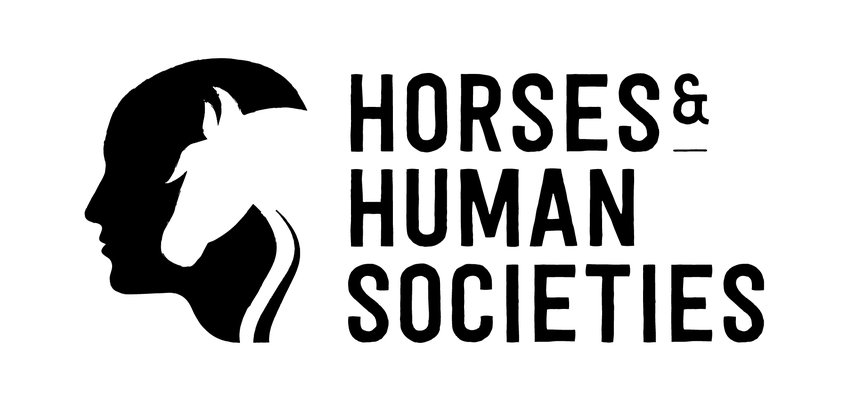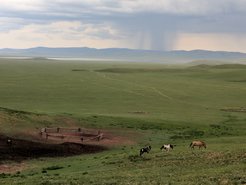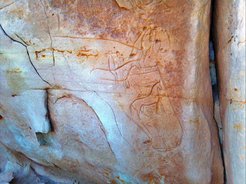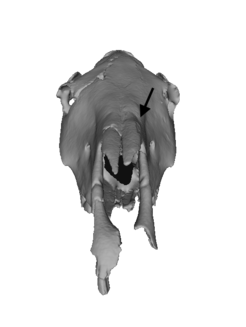
Horses and Human Societies
Investigating the relationship between humans, horses, and the environment through archaeological science

From the Great Plains of North America to the great steppes of Central Asia, the domestication of the horse (Equus caballus) transformed human societies around the world. In steppe environments, horses are a key livestock animal and a valuable source of meat and dairy products, with a hardy constitution that is well-adapted to surviving difficult winters on low-quality grasses. As a riding mount, the speed and mobility offered by horses changed the nature of travel, exchange, and communication in human societies. In the Old World, cavalry became the foundation of military power, and equestrian nations filled the Great Plains and high Pampas of North and South America after Spanish arrival brought horses to the New World.
Despite the obvious importance of horses in shaping our modern world, the broader questions of when, why, and how horses were taken up by human groups, as either livestock or transportation, often remain unanswered. By applying scientific techniques from archaeozoology, radiocarbon dating, and proteomics to ancient faunal remains from archaeological sites, Horses and Human Societies seeks to characterize the adoption of domestic horses by ancient societies, placing this process in environmental and ecological context using empirical datasets.

Our project has made key strides toward understanding how horses were used based on their osteological remains, which are often the only materials available to understand early horse cultures. This year, our project uncovered the earliest evidence for veterinary dentistry. Related research investigates the ways that human impacts and activity – such as bridles, bits, and exertion – can be traced in the past, and what these lines of evidence tell us about the first emergence of horseback riding and horse herding.
Horses and Human Societies also seeks to understand the spread of domestic horses into new landscapes. Working with the Institute for Archaeology and Ethnography at the Russian Academy of Sciences – Siberian Branch, HHS investigates the ways that horses and donkeys were used in the high mountains of Central Asia before and during the emergence of the first Silk Road trade networks, using biomolecular analysis (ZooMS, ancient DNA) to get detailed information from the smallest fragments of archaeological horse bones. Partnering with Northwest University in Xi’An, HHS is applying cutting edge scientific techniques such as 3D scanning, geometric morphometrics, and stable isotopes to reconstruct the ancient networks of animal exchange that brought horses into China along the ancient Silk Road.

Ongoing research explores the introduction of horses into North America following the arrival of Spanish colonists in the 16th century, and into Australia with European settlers in the 18th and 19th centuries. By identifying horse remains from protohistoric archaeological collections with mass spectrometry of collagen sequences (ZooMS), and targeting these specimens for biomolecular study using stable isotopes and ancient DNA, our project is providing the first direct clues into how early native groups and colonial settlers managed horses in these new environments. By combining historical records with radiocarbon dates and statistical modeling, we hope to model the geographic spread of horses in Australia and North America, and assess the impact of climate change and environmental processes in the spread of horses into the New World.
Related publications:
Taylor, William and Jamsranjav Bayarsaikhan,Dimitri Stazewski, Scott Bender, Jocelyn Whitworth, Tumurbaatar Tuvshinjargal, Monica Tromp, K. Bryce Lowry, William Fitzhugh, Nicole Boivin. 2018. Origins of Equine Dentistry. Proceedings of the National Academy of Sciences, published ahead of print 2 July 2018.
Shnaider S.V., Abdykanova A., Taylor W., Kolobova K.A., Krivoshapkin A.I. 2018. Early human occupation of high altitude in western Central Asia: new evidence from the Alay valley, Kyrgyzstan. Antiquity Vol 92 (June 2018).
Taylor W, Tuvshinjargal T (2018). Horseback riding, asymmetry, and anthropogenic changes to the equine skull: evidence for mounted riding in Mongolia’s Late Bronze Age. In Care or Neglect?, edited by L. Bartosiewicz and E. Gal. Oxford, Oxbow Books.
Taylor, William. 2017. A Bayesian chronology for early domestic horse use in the Eastern Steppe. Journal of Archaeological Science (2017).
Taylor, William. 2017. Horse demography and use in Bronze Age Mongolia, Quaternary International (2016), http://dx.doi.org/10.1016/j.quaint.2015.09.085.
Taylor, William, Tuvshinjargal Tumurbaatar, and Bayarsaikhan Jamsranjav. 2016. Reconstructing Equine Bridles in the Mongolian Bronze Age. Journal of Ethnobiology 36(3):554-570.
Taylor, William, Bayarsaikhan Jamsranjav, and Tuvshinjargal Tumuurbaatar. 2015. Equine Cranial Morphology and the Archaeological Identification of Riding and Chariotry: Applications to Mongolia’s late Bronze Age. Antiquity 89(346): 854-871.


